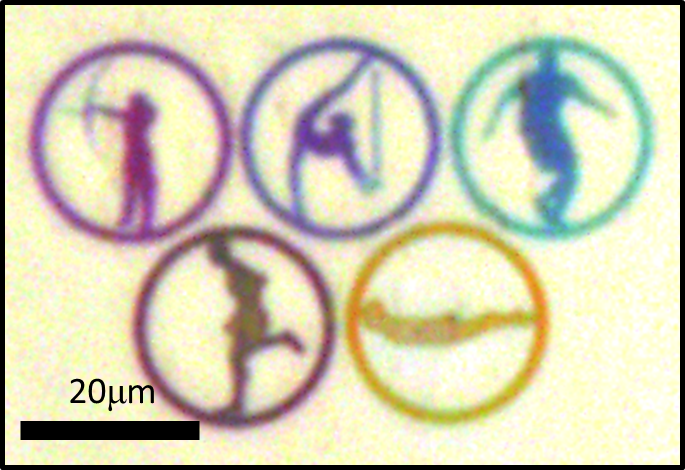Researchers at the University of Michigan have developed a reflective screen technology that could lead to the next generation of smart gadgetry capable of being read outdoors on even the brightest of days.

About reflective displays
The great thing about reflective displays is that they don’t need backlight to be read as conventional displays. As a result, they tend to consume less power than comparable backlit technologies.
Another positive thing about reflective display technology is that it presents a unique opportunity to further the field of data storage and cryptography: entire documents could be securely marked reflective — and therefore invisible to the naked eye — to prevent counterfeiting.
A new approach to reflective display technology
Jay Guo, UM's professor of electrical engineering and computer science, led the University's research into this technology. He explains that their breakthrough came by way of funneling light into nanoscale metallic grooves which, in turn, trapped it inside the grooves themselves. Doing this, they discovered, led to the light beam’s reflected hues staying true no matter the viewer’s angle.
“That's the magic part of the work,” Guo said. “Light is funneled into the nanocavity, whose width is much, much smaller than the wavelength of the light. And that's how we can achieve color with resolution beyond the diffraction limit. Also counterintuitive is that longer wavelength light gets trapped in narrower grooves.”
Breaking things down a bit more on the granular level — the visible spectrum spans from about 400 nanometers (violet) to 700 nm (red). Knowing this, the team worked to determine what size slit would catch which color light.
They created nanoscale grooves of various widths and depths into a plate of glass using the same technique used to make computer chips. They then coated the grooved plate with a layer of silver. When light hit the grooved surface, they found that its electric component created a polarization charge at the actual metal slit surface, thereby boosting the local electric field near the slit, and pulling a particular wavelength of light in.
Using the print industry’s framework of cyan, magenta, and yellow as guidance, the team recorded the following discoveries using groove depths of 170 nm and spacing of 180 nm:
• A slit 40 nm wide will trap red light and reflect cyan color;
• A slit 60 nm wide will trap green and reflect magenta; and
• A slit 90 nm wide will trap blue and reflect yellow.
Reflecting on the technology’s future use, Guo said, “With this reflective color, you could view the display in sunlight. It's very similar to color print.”
He added: “Each individual groove — much smaller than the light wavelength — is sufficient to do this function. In a sense, only the green light can fit into the nanogroove of a certain size.” It is best evidenced in the images below:


In the top image, the UM team created the color in these tiny Olympic rings using precisely-sized nanoscale slits in a glass plate coated with silver. Each ring is about 20 microns — smaller than the width of a human hair — and the different colors were all produced using different widths of the slits (e.g. yellow is produced with slits that are each 90 nm wide).
In the black-and-white image below are the Olympic rings as viewed through a scanning electron microscope. In analyzing the magenta in the bow, we see that the color is produced with several short lines, as small as 100 nm long and 60 nm wide, demonstrating ultra-high color resolution. The purple color in the gymnast's rope, on the other hand, can be produced using just two nanoscale grooves.
Outlook
Presently, the device can only display static pictures. Researchers hope to eventually improve the technology to the point that it can one day support moving picture.
For more information, read the paper that Guo and his team published in Nature (free download). It’s under the title “Angle-Insensitive Structural Colours based on Metallic Nanocavities and Coloured Pixels beyond the Diffraction Limit.”
Story via: eurekalert.org
Advertisement





